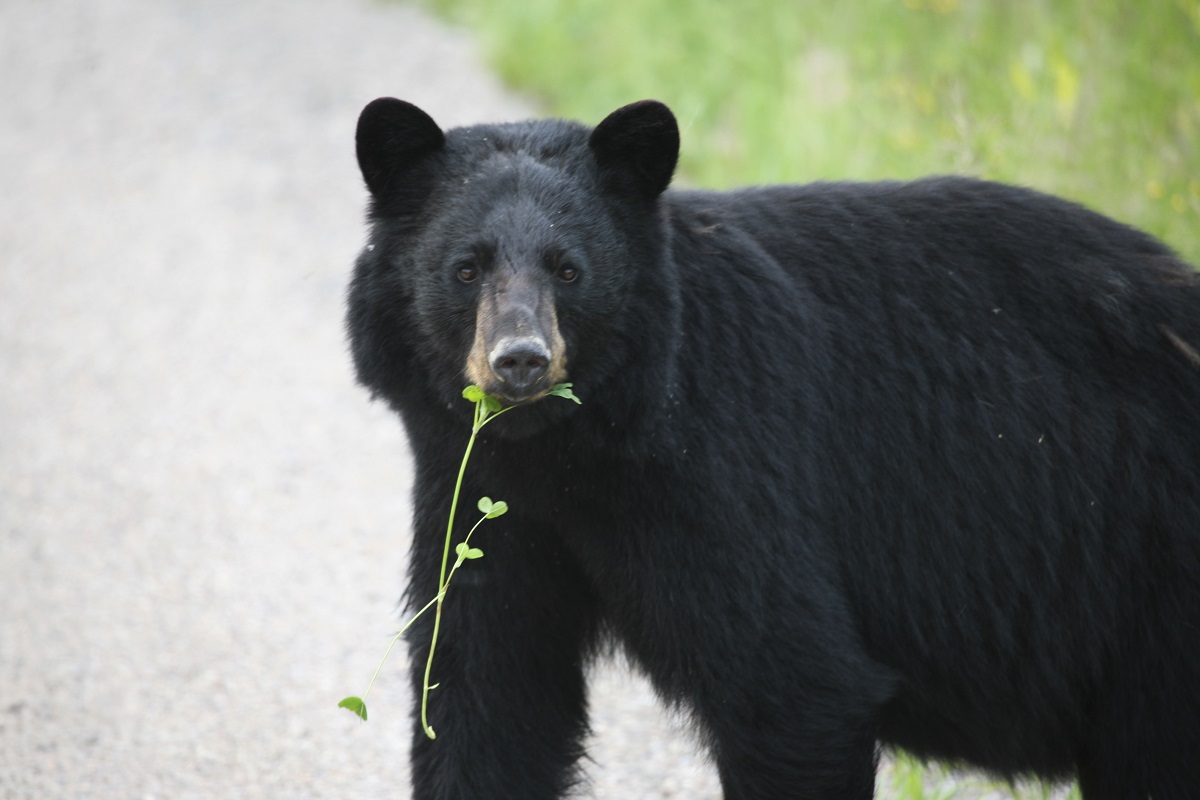
Name
- Common name: American Black Bear
- Scientific name: Ursus americanus
- Order: Carnivora
- Family: Ursidae
Also known as
Shooh-zhraii in the Gwich’in language
Viewing opportunities
- Black Bears can commonly be seen along Yukon highways and roads. They are often feeding on fresh greens that grow alongside the road.
- May is the best month for viewing bears because they are often out in the open. Look on grassy south-facing hillsides like Kusawa Lake or Stewart Crossing.
- To increase your chances of seeing a bear go for a hike or paddle a river.
- Viewing should be conducted responsibly and respectfully. Be sure to follow bear safety practices and maintain your distance, especially if there are cubs present.
Description
- Generally black fur with a dark brown muzzle
- Colour can range from blonde, grey-white (bluish), cinnamon, brown to black
- Smaller and missing the distinctive shoulder hump of Grizzly Bears
- Side profile of face is a straight line between the nose and eyes
- Sometimes a white chest patch is present
Fast facts
- Length: 168 cm
- Weight: Males are 60 to 226 kg and females are 40 to 136 kg
- Lifespan: 15 to 25 years
- Predators: None
- Habitat: Boreal forest, subalpine
Conservation status
- Yukon: S5 (Secure)
- Global: G5 (Secure)
Yukon population estimate
10,000
Behaviour
Black Bears continuously move across the land looking for food. They are omnivores and their diets vary widely depending on the time of year and where they are. They typically live in forested areas, but do leave forests in search of food. They are solitary, though females may keep a yearling and young cub for a season. Black Bears have a low reproduction rate. Females breed for the first time at 7 to 9 years and every 3 to 4 years after. Bears will go into dens at the end of October to sleep until the end of April.
Diet
Berries, horsetails, willow catkins, grasses, insects, fish, roots, ungulate calves
Distribution
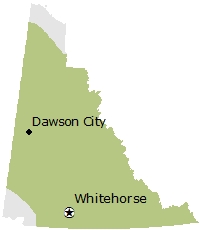
Sights and sounds
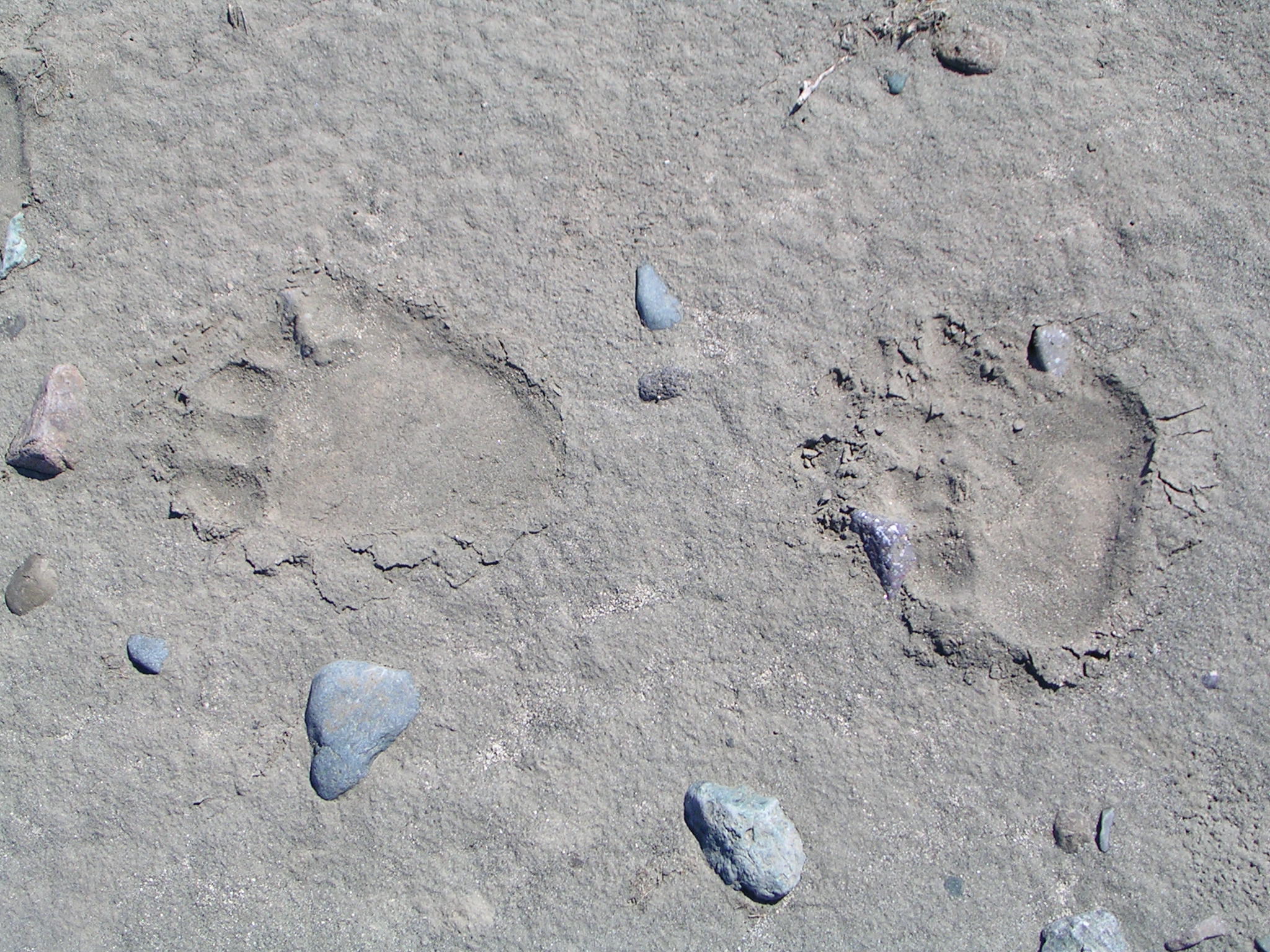
Front and hind tracks in mud. Credit: Kathi Egli.

Black bear tracks, front and hind: 17.5 cm x 8.8 cm.
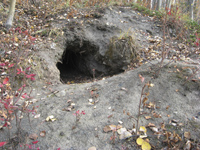
Bear den entrance. Credit: John Ryder.
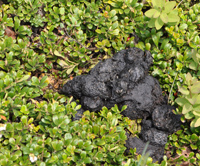
Bear scat.
Black Bears and people
- In First Nations culture, it is not wise to speak badly of bears because bear spirits can hear and bad things would happen to the speaker.
- Black Bears feature prominently in the stories of some of the Yukon’s Indigenous peoples. One tale tells of how the Black Bear was a creation of the Great Spirit. In the mythology of the Tlingit, humans learned to respect bears when a girl married the son of Black Bear Chieftain.